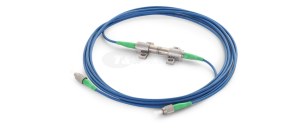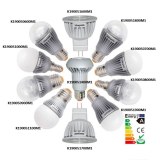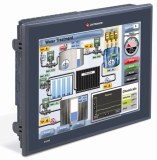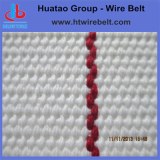Being a fiber optic sensor, a FBG sensor has all the advantages usually attributed to these devices, such as low loss relative to the fiber length, immunity to electromagnetic and radio frequency interference, small size and weight, intrinsically safe operation in environments characterized by hazardous materials, high sensitivity and long-term reliability. In addition, fiber Bragg grating technology reveals an inherent serial multiplexing capacity and an ability to provide absolute measurements without the need for referencing. This makes it a natural alternative to conventional electrical sensing technologies.
FBG Optical Bragg Grating Sensors For Sale
FBG optical sensors can be deployed in harsh environments including high temperature, high radiation, high vacuum, high pressure, and low-temperature, such as power transformer, switch cabinet and other power equipment hot spot monitoring; high-power generator vibration and temperature monitoring; wind blade monitoring; aircraft fuel tank stress monitoring; thermal nuclear reactor strain, temperature, and displacement monitoring; spacecraft monitoring and so on. As a professional fiber Bragg grating manufacturer, T&S can provide you with high-quality sensor FBG at reasonable prices, our production line includes FBG strain sensor, FBG temperature sensor, fiber bragg grating pressure sensor, etc. T&S provides FBG sensors at the best FBG sensor price, Please feel free to leave us a message..
FBG Optical Sensors Classification
• Strain sensors work similarly to the temperature sensor. The wavelength responds to the applied strain. These Fiber-optic Bragg Grating sensors are spot-welded directly to the surface of the metal structure with a protective silicone cover.
• Temperature sensors reflect wavelengths shifts in response to temperature alters. Temperature sensors are protected by a small-sized steel housing, and this type of FBG sensor can be easily installed in any structure or material like concrete and the like.
• Pressure sensors measure the relative pressure or level of liquids and gasses in confined tubes, tanks, vessels, and pipelines.
• Displacement sensor measures the deformation magnitude of various structures. These Fiber Bragg Grating sensors are usually fixed on the structure surface, to measure distance change between two anchor points.
• Vibration sensor also known as the accelerator is a sensor tailored to measure acceleration at different frequencies, which measures structural vibration in most applicable cases. The vibration sensor combines compact size and high resistance to corrosion and harsh environments with long-term reliability.
• Also, there are tiltmeter and load/weight sensors that perform based on FBG technology.
FBG Sensor Principle
FBG sensor technology is applied to products based on sophisticated physics and technology. Laser light travels through a fiber core in an exact defined manner. Bragg grating is photolithographed onto the core of a piece of optical fiber and reflections of this grating create a stable sensor. Changes in strain, pressure, temperature, vibration, acceleration, etc. over the fiber will cause a wavelength shift and reflections magnitude change. This change allows very accurate measurements to be attainable either over a long period of time or in super-fast cases.
The Fiber Bragg Grating pressure sensor takes FBG as the sensing element. FBG is highly responsive not only to mechanical deformation but also to temperature changes.
When the light beam travels towards a fiber Bragg grating structure, only the specific wavelength of light is reflected by the refractive index. This wavelength is the so-called Bragg wavelength, and this is actually what makes fiber optic Bragg grating transmit most of the light whilst reflecting a certain wavelength.
FBG pressure sensor can be installed far away from the interrogators, which applies to the quasi-distributed system based on FBG, as well as to any distributed systems, however, the FBG temperature sensor normally has a very fast reply and low heat retention. They require no power supply, grounding, and galvanic isolation, and it functions perfectly under bad climatic conditions and harsh environments.
Localisation : 8 Jinxiu Middle Road, Pingshan, Shenzhen, Guangdong, China, 518118 Jinxiu Middle Road,
Personne à contacter : Lin Jack, 0755 32983688







